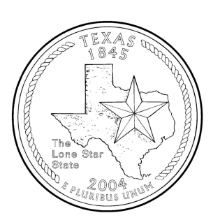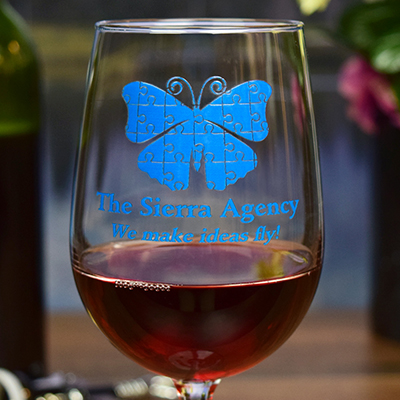Texas Wine Country
Texas Wine Country

Texas Makes Wine?
Tell someone you went to Texas Wine Country and invaribly you will hear "I didn't know Texas produced wine!" The wine industry in Texas began in the mid-1970s and is flourishing very well today. Here's some more history and an overview on Texas wines.
Priests from Mexico planted the first grapevines in El Paso del Norte in 1659. The grapes were called the El Paso or Mission grapes. Droughts, struggles and crop failures followed, but the Spanish government denied requests to abandon El Paso since it was an essential route between Mexico and New Mexico. A dam constructed on the Rio Grande River in 1684 helped make the land fertile by 1726. According to the late University of Texas Professor Carlos Castaneda, "Wheat, corn, beans and all kinds of vegetables as well as vineyards, which produced delicious grapes, thrived." But roads, even the few crude ones, were almost nonexistent. There were no towns. There was no commerce. By 1839, more than half of Texas was still frontier. Settlers were too busy building homes, growing their food and simply surviving to cultivate vines.
Texas' oldest, still operating winery is Val Verde, founded in 1883 by an Italian emigrant, Francis Qualia. He and others were working on the railroad line across south Texas when they discovered Del Rio. Qualia stayed, planted cuttings given to him by a widow, and made wine.
Prohibition from 1920 to 1933 killed the wine industry in the United States, and it took decades to rebuild. In the modern era, the volatile Texas wine industry has had a total of 46 wineries. Val Verde, Guadalupe Valley, Llano Estacado, La Buena Vida and Fall Creek were the modern pioneers in the 1970s; by the end of the 1980s, there were a total of 26 wineries. Today there are approximately 275 scattered across the state, with the largest concentration, about 70, in the Hill Country, located in central Texas.

Texas has a number of American Viticultural Areas (AVA): Texas High Plains, Mesilla Valley, Texas Hill Country -- so large it has two others inside it (Bell Mountain and Fredericksburg) -- and Escondido Valley and Texas Davis Mountains in West Texas.
The biggest landowner and producer is Ste. Genevieve in West Texas. On the way, a road sign on the Trans-Pecos highway warns drivers to be sure that their gas tanks are full because after that point there's nothing -- no towns or gas pumps -- only cactus, scrub brush, and tumbleweeds. It's desert. Desolate describes this part of Texas best. It's flat, sizzling summer hot, and bitter winter cold, with occasional creosote bush or sagebrush. Eventually mesas appear across the vast open space. Suddenly something green and otherworldly comes into view. Travelers are almost upon the green patch before they can identify it as vegetation. What could possibly be growing in this isolated, parched country? What else, of course, except grapevines? They take being stressed to new heights.
And despite stress, they produce. In 1999, Ste. Genevieve produced 455,000 gallons of wine, nowadays Ste. Genevieve's production facilities produce more than 630,000 gallons of wine each year.
There are over 200 wineries in Texas, producing around 4,100 tons of wine a year, making it the fourth-largest wine producer in the United States. Cabernet Sauvignon, Chenin Blanc and Merlot are the Texas wine staples; however, producers are experimenting with Syrah, Viognier, Malbec and other grapes. While Texans drink 95% of their wines, a few cases have been shared with about 37 states and abroad -- France, Italy, Switzerland and Britain.
Besides Ste. Genevieve, the major producers and their 1999 case amounts are Llano Estacado (220,000), Messina Hof (265,000) and Becker Vineyards (50,000). These wineries chalk up considerable awards. Magazines have acknowledged Texas wines too. The 1997 Llano Estacado Signature Red was designated one of Wine Enthusiast's "100 Great Wines Less than $15" and also was listed a "Best Buy" at $10 with a 91 point rating. Wine Spectator gave their Sauvignon Blanc a national 'Best Buy,' and The Wall Street Journal highly rated their Fall Creek Merlot and Reserve Chardonnay.
Wineries like Messina Hof have branched out and have a Bed and Breakfast. Becker Vineyards' three acre field of lavender is another unique Texas touch. From that they have created their own lavender soaps, sachets, lotion and shampoo that you can buy in their "Lavender Shop".
Newer Texas wineries producing noteworthy wines include Spicewood Vineyards. Based on awards received they have had great success with their Sauvignon Blanc. Spicewood was one of 63 best wineries honored by Vineyard & Winery Management. Alamosa Wine Cellars is another newer and noteworthy winery. They specialize in Mediterranean style wines. Specialty wines include Texas Port, Orange Muscat and Texas Sherry.
If you plan to visit, give yourself a couple of weeks to tour the state. Remember, Texas is 26 per cent larger than France.
~The Tipsy Grape



